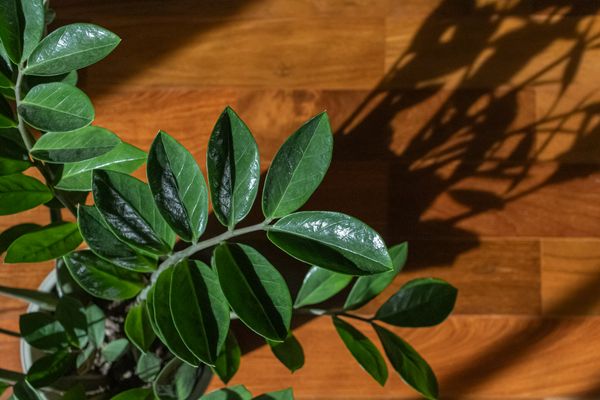ZZ Plant Care Guide
How to grow and care for ZZ Plant (Zamioculcas zamiifolia)
Welcome to the world of Zamioculcas zamiifolia, commonly known as the ZZ Plant. This resilient and easygoing houseplant is popular for its attractive, glossy leaves and tolerance to low light conditions. The ZZ Plant is an excellent choice for both beginner and seasoned plant enthusiasts looking for a hardy and low-maintenance addition to their indoor garden. Let’s delve into the nuances of caring for this remarkable plant.

Disclosure: This content includes affiliate links, which means we may earn a commission if you click on a link and make a purchase. As an Amazon Associate, we earn from qualifying purchases. This comes at no extra cost to you and helps offset the cost of running Leafwise. Please read our disclaimer for more info.
Table of Contents
Care
Light
ZZ Plants thrive on minimal care and adapt well to various lighting conditions. They perform best in bright, indirect light but can tolerate low-light environments, making them ideal for offices and rooms with minimal sunlight. While they can survive in low light, prolonged low light exposure may cause leggy growth. To prevent this, provide bright, indirect light when possible. Avoid prolonged exposure to direct sunlight, as it can scorch the leaves.
Watering
Allow the soil to dry out completely between waterings, as the ZZ Plant is drought-tolerant and prone to root rot if overwatered. Water every 2-3 weeks, but always check the soil moisture beforehand to avoid overwatering. Adjust the frequency based on environmental conditions such as temperature and humidity. In cooler months, reduce watering frequency further.
Temperature & Humidity
Maintain temperatures between 60°F (16°C) and 75°F (24°C), avoiding exposure to temperatures below 45°F (7°C), which can damage the plant. ZZ Plants are not particular about humidity and can thrive in average household conditions without additional moisture.
Soil
Use a well-draining potting mix to prevent water retention. A standard houseplant potting mix will suffice, but adding sand or perlite can improve drainage and aeration, helping prevent root rot.
Fertilization
ZZ Plants are light feeders. Apply a diluted, balanced liquid fertilizer once or twice during the growing season (spring and summer). Avoid over-fertilizing, as it can cause salt buildup and damage the roots.
Maintenance
Cleaning
Wipe the leaves with a damp cloth regularly to remove dust and improve photosynthesis. Keeping the leaves clean will also help you detect any early signs of pests or diseases.
Pruning
Minimal pruning is required. Trim any yellow, brown, or damaged leaves using clean, sharp scissors to maintain the plant’s appearance.
Repotting
Repot every 2-3 years or when the plant becomes root-bound. Choose a pot that is slightly larger than the current one and refresh the soil to support continued growth.
Propagation
ZZ Plants can be propagated through leaf cuttings or division.
Leaf Cuttings
- Selecting a Leaf: Choose a healthy, mature leaf and cut it at the base using clean shears.
- Rooting: Place the leaf in well-draining soil or a container of water. If using water, change it regularly.
- Waiting Period: Root development through leaf cuttings can take six to nine months as new rhizomes slowly form, so patience is essential. During this time, maintain a warm environment and monitor for healthy root growth.
- Transplanting: Once roots have developed, transfer the leaf cutting to a pot with fresh soil.
Division
- Removing the Plant: Carefully remove the plant from its pot and shake off excess soil to expose the rhizomes.
- Dividing the Rhizomes: Gently separate the rhizomes, ensuring each section has at least one healthy stem and root system.
- Replanting: Plant each division in its own pot with fresh, well-draining soil.
- Aftercare: Water the newly potted divisions lightly and place them in a warm, well-lit environment.
Common Issues
Pests
Although ZZ Plants are generally pest-resistant, they may occasionally attract aphids or spider mites.
- Solution: Treat infestations with insecticidal soap or neem oil. Regularly inspect the leaves and clean them to prevent issues.
Root Rot
Cause: Overwatering or poorly draining soil.
- Solution: Allow the soil to dry out completely between waterings. If rot is detected, remove the plant from its pot, trim rotted roots, and repot in fresh soil.
Yellowing Leaves
Cause: Overwatering is the most common reason.
- Solution: Allow the soil to dry out thoroughly before the next watering. Ensure the pot has proper drainage.
Brown Leaf Tips
Cause: Insufficient humidity or overly dry air.
- Solution: While ZZ Plants are tolerant of low humidity, occasional misting can help in extremely dry environments.
Toxicity
ZZ Plants are mildly toxic to pets and humans due to the presence of calcium oxalate crystals. Ingestion can cause irritation, including mouth discomfort, drooling, and digestive issues. Keep the plant out of reach of children and pets.
By following these guidelines, your ZZ Plant will thrive with minimal effort, adding lush greenery and elegance to your indoor space.
